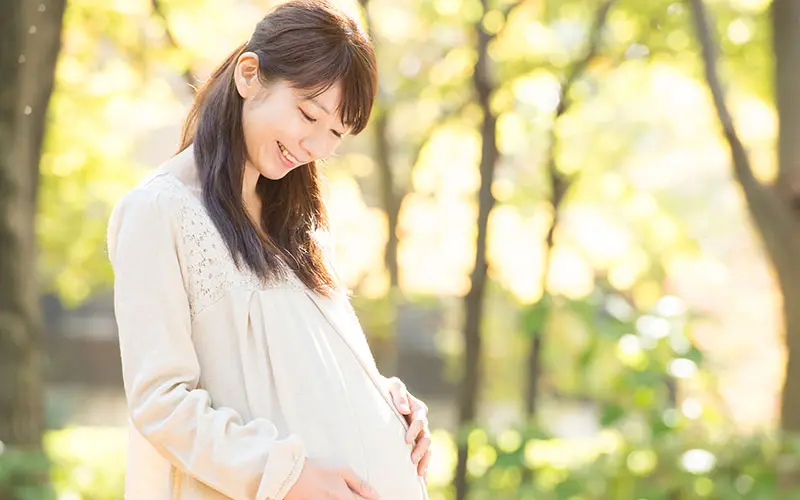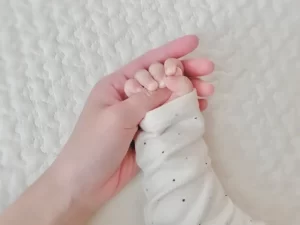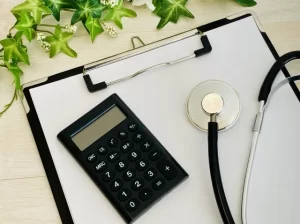Flow from pregnancy to childbirth|When can I receive NIPT (New Prenatal Testing)?
When you’re pregnant for the first time, there are many things you don’t know, such as when to see a gynecologist and what to prepare for.
For each week of pregnancy,Guidelines for when to visit a gynecologist, things to prepare for, points to note, etc.We have compiled a list of them for you to use as a reference.
|
Early pregnancy |
Pregnancy up to 13 weeks and 6 days |
・Visit a gynecologist around the 5th to 6th week of pregnancy ・Start of health checkup for pregnant women (once every 4 weeks) ・Submit a pregnancy notification form and receive a maternal and child health handbook ・NIPT test can be performed from 10th week to 15th week *It is safer to choose a place to give birth early in your pregnancy! |
|---|
|
Second trimester |
14th to 19th week of pregnancy |
Stability period |
|---|---|---|
|
20th to 23rd week of pregnancy |
・Until this period, it is recommended that pregnant women have a health checkup once every four weeks ・Parent class participation period |
|
|
24th to 27th week of pregnancy |
・From this period until the 35th week of pregnancy, a health checkup for pregnant women is recommended once every two weeks ・Time to pay attention to bloating (preventing premature birth) |
|
Last trimester |
28th to 35th week of pregnancy |
・Time when the uterus grows and you feel loss of appetite or stomach upset ・Time when pregnancy hypertension syndrome is most likely to occur |
|---|---|---|
|
36th to 40th week of pregnancy |
From this time on, we recommend pregnant women to have a health checkup once a week. |
|
Birth |
I will explain the process up to childbirth in detail later. |
|---|
What you can learn from NIPT (New Prenatal Diagnosis)
NIPT (New Prenatal Test) Between the 1st and 15th week, a blood sample (10ml) can be used to check for fetal disorders. It is a safe testing method with less risk of miscarriage as it does not put any strain on the mother’s body.
Trisomy 13 (Patau syndrome)
Physical characteristics: “Growth disorder,” “Breathing disorder/Eating disorder.”
Complications: “Cleft lip and palate,” “Polydactyly,” “Eye disease,” “Heart disease (80%),” “All This can lead to brain and organ damage, such as “proencephaly.”
Trisomy 18 (Edwards syndrome)
Physical characteristics: Growth disorder, breathing disorder, eating disorder, intellectual disability. Complications: Heart disease (90%), gastrointestinal malformation, cleft lip and palate. Patients may suffer from multiple disorders in the brain, heart, etc., such as joint contractures.
Trisomy 21 (Down syndrome)
Physical characteristics: “growth disorder,” “decreased muscle tone,” “characteristic facial appearance”
Complications: Having disorders in organs such as “thyroid disease,” “otolaryngological disease,” and “ophthalmological disease.” there is.
Facilities certified by the Japanese Medical Association and Japan Society of Obstetrics and Gynecology only have the above trisomy items, but non-certified facilities have other items such as [Sex chromosomal diseases] [All autosomal partial region deletion diseases] [Gender determination] can also be tested. The details of the disease are as follows.
Syndrome
Symptoms
Incidence rate
Klinefelter syndrome
・Poor development of secondary sexual characteristics
・Breast development
・Large limbs and long lower legs
・Small testicles and azoospermia
1/1000 people (boys)
Turner syndrome
・Lymphedema
・Cubitus valgum and pterygium
・Short stature
・Delayed sexual maturity
・Amenorrhea
1/2500 people (girls)
XXX syndrome
・Slightly low intelligence
・Problems with language ability
・Irregular menstruation and infertility
1/1000 people (girls)
XYY syndrome
・Tall
・Problems with language ability
・Learning disability
・Lack of attention
・Hyperactivity disorder
1/1000 people (boys)
Reference materials: MSD Manual
Syndrome
Symptoms
1p36 deletion syndrome
Growth disorder, severe mental retardation, intractable epilepsy, etc.
4p deletion syndrome
Severe mental developmental delay, growth disorder, intractable epilepsy, multiple dysmorphic abnormalities, etc.
5p deletion syndrome
Low birth weight, growth failure, facial features, hypotonia, delayed psychomotor development, etc.
15q11.2 deletion syndrome
Muscle hypotonia, hypopigmentation, external genital hypoplasia, etc.
Angelman syndrome
Severe mental developmental delay, epilepsy, ataxic movement disorder, behavioral abnormalities, sleep disorders, hypochromia, characteristic facial appearance, etc.
22q11.2 deletion syndrome Di George syndrome
Congenital heart disease, mental developmental delay, characteristic facial appearance, immunocompromise, cleft palate/soft palate insufficiency, nasal voice, hypocalcemia, etc.
Reference materials: MSD Manual
The process of giving birth | What are the signs of childbirth?
After the 40th week of pregnancy, childbirth is near. First, let’s take a look at the process leading up to childbirth.
-
- If you see signs of childbirth, call your obstetrician.
*It is safer to prepare for hospitalization in advance.
- If you see signs of childbirth, call your obstetrician.
-
- Take various tests such as blood pressure
-
- First stage of labor: Waiting for the cervix to open (labor)
-
- Second stage of labor: Birth
Now, let’s explain each in detail.

Signs of childbirth
There are three main types of birth signs. If you don’t know the signs, don’t hesitate to contact your obstetrician and gynecologist.
Oshirushi
Sticky discharge mixed with blood is called “shiki”. This is a sign that labor will begin within a few days to a week, so there is no need to rush to contact the maternity hospital. However, if you experience heavy bleeding or severe pain, please contact us immediately.
Labour pains
The uterus repeatedly contracts and rests. At first, the intervals are irregular and the pain is not that bad. When your contractions gradually become more regular and every 10 minutes, call your maternity hospital.
Early water rupture
Generally, your water breaks after labor starts, but sometimes it happens first. If your water breaks, there is a high possibility that your baby will become infected with bacteria, so please contact your maternity hospital immediately.
Things to prepare before hospitalization
Since you don’t know when you will be hospitalized, we recommend that you prepare when you are well.
-
- Maternity handbook
-
- Postpartum shorts (postpartum shorts)
-
- Maternity pad (postpartum napkin)
-
- Nursing bra
-
- Towels/bath towels
-
- Tissue
-
- Face washing supplies
-
- Slippers
-
- Contacts/glasses
-
- Smartphone/charger
-
- Discharge uniform (mother and child)
Some items can be purchased or rented at the maternity hospital, so it’s best to check in advance.
In addition, although not essential, we will also introduce “things that were useful”.
-
- PET bottle cap with straw
-
- Tennis ball (for strain relief)
-
- Cushion (for breastfeeding/circle seat)
-
- Snack
-
- Cardigan
-
- Etiquette bag
-
- Compression socks
-
- Makeup tools
-
- Camera
During labor, it is difficult to even drink water, so The plastic bottle cap with a straw was very convenient because I could drink it while lying down.
It’s inconvenient if you’re missing something while you’re in the hospital, so be sure to think about what you’ll do after giving birth and prepare accordingly.
Time from the start of labor until the cervix opens
Childbirth begins only after the cervix has dilated to 10 cm.
|
Size of cervix |
The interval between contractions |
Duration time |
Sensation of pain |
|---|---|---|---|
|
〜2.5cm |
Every 10 minutes |
9-10 hours |
throbbing |
|
2.5~4cm |
Every 3 minutes |
2-3 hours |
Tightened |
|
4~8cm |
Every 2 minutes and 30 seconds |
1-2 hours |
Tightened |
|
9~10cm |
Every 2 minutes |
1-2 hours |
Being pulled |
The average time from the start of labor to delivery is approximately 10 to 12 hours for primiparous women and 4 to 6 hours for multiparous women.
Flow from childbirth to post-labor|How long does it take?
Childbirth occurs when the cervix is fully dilated. Let’s take a look at the process from childbirth to postpartum labor.
-
- Second stage of labor: Birth of baby
-
- Third stage of labor: Placenta comes out
-
- The uterus returns to its original size (posterior labor)
Now, let’s explain each in detail.
Flow until the birth of a baby
When the cervix is fully dilated, it will naturally try to force the baby out. Your baby will be straining in time with the contractions, so if you are having a painless delivery, ask them to tell you when to strain and try to give birth.
The average time required for childbirth is 1 to 2 hours for primiparous women and 30 minutes to 1 hour for multiparous women, but some women give birth in just a few minutes.

The process from the placenta coming out to the end of labor
After giving birth, light contractions will occur a few minutes later, and the placenta will come out within 5 to 10 minutes. Afterwards, uterine contractions (backward labor) begin as the uterus tries to return to its original size and continue for several days.
The pain usually peaks on the first day after giving birth, but if the pain is still severe after a few days, please consult your doctor.
Period from birth to discharge | What should you do after discharge?
Childbirth consumes a lot of physical strength. Some people may be worried about what condition they will be in when they are discharged from the hospital, so let’s check how long it will take to be discharged and what to do after discharge.
Period until discharge
The estimated time until discharge from the hospital varies depending on the method of delivery.
|
Children’s birth |
Around the 6th |
|---|---|
|
Emperor incision |
Around 7 days |
Although you may need to stay in the hospital for a longer period of time due to postpartum tests, etc., you will generally be discharged from the hospital in about a week.
How to spend your time after being discharged
After giving birth, time is important for both body and mind to recover. After giving birth, you should be careful of the following symptoms:
-
- Anemia
-
- Hormonal imbalance (around 3-10 days after childbirth)
-
- Lack of nutrition due to breastfeeding
It takes about 6 weeks for the uterus to recover, and 2 to 4 months to return to its pre-pregnancy state. First of all, please focus on taking care of your baby and recovering your health.
During the puerperal period, 6 to 8 weeks after giving birth, please take your time and cherish the time you have with your baby.
[References]
-
- Ministry of Health, Labor and Welfare –Prenatal health Examination
-
- National Center for Child Health and Development –Childbirth On the day. What happens then?
-
- National Center for Child Health and Development –Childbirth From the start until the baby is born
-
- Japan Academy of Midwifery –Childbirth Nature of labor pain as it progresses
-
- National Center for Child Health and Development –Hospitalized Schedule
Article Editorial Supervisor

岡 博史先生
【役職】
【資格】
【略歴】
【所属】
【SNS】
 中文
中文












